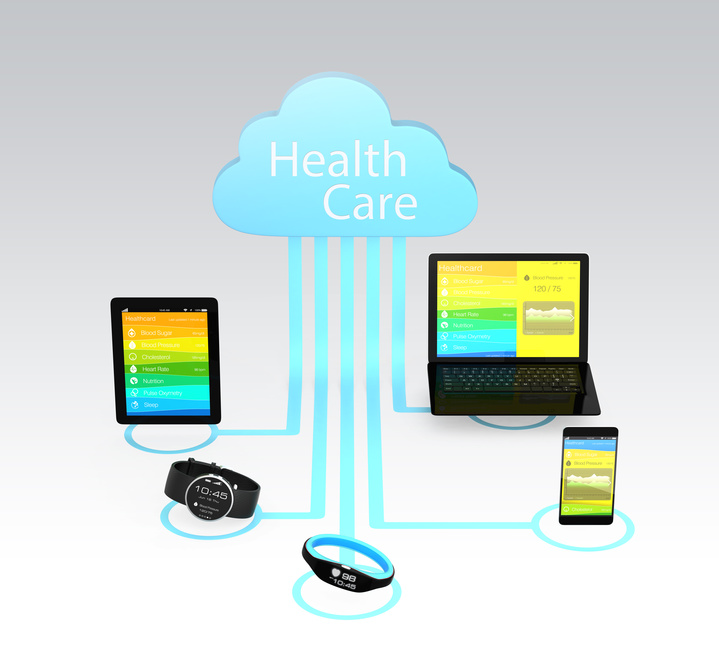
The healthcare industry has been traditionally termed as an industry which is slow in terms of adoption of latest technologies. However, this is changing very fast. As technology continues to transform every aspect of our lives, it has started to create important and profound impact in the healthcare domain as well. The industry is leveraging technology to increase information access and drive better patient access. Undoubtedly, healthcare is marching very fast towards a major evolution with digital, personalized medicine and the empowered patient.
Here are, what we believe, the upcoming trends in healthcare technology –
Mobile Apps
With the increasing population of health-conscious individuals, every smartphone user has one of other healthcare app installed on his phone. People are using more and more personal monitoring tools to help them track their fitness activities, caloric intake, blood pressure, sleep patterns and all such things. While this is just the beginning, more sophisticated apps and nanotechnology is beginning to help individuals to track their own health and derive some actionable data from that – for themselves as well as for the medical community. It is not very far when all this data will be integrated with the healthcare system to help you anticipate and prevent broader health issues.
Big Data
Big Data is helping every industry to become more effective and efficient – and healthcare is no exception to that. It is helping healthcare industry in increasing profits, reducing wasted overhead, predicting epidemics, improve quality of life, curing diseases and avoiding preventable deaths. Instead of using the individual patient data in isolation, medical and data professionals are able to gather large volume of data, compare and analyze it and highlight patterns which emerge through the comparison. Sophisticated predictive modelling is being used to gather the patient data and assess the likely success of the prescribed treatment based on the data from other patients with the same condition, genetic factors and lifestyle.
Telemedicine
Faster Internet connections, availability of software tools and surge in mobile devices have enabled people at large to consult doctors on phone and video chats – from anywhere. With Electronic Health Records, it has become easier for doctors as well to access patient record and prescribe medicines. Undoubtedly, consumers are excited about the service – The younger population is finding it appealing because of the convenience it offers. Even the older population, which is in much more need of this because of the mobility challenges, has started adopting it. Telemedicine is positively improving the way doctors-patient interaction.
According to a report by iData Research, Telemedicine is expected to boost the U.S. market for patient monitoring by about $5 billion by the year 2020.
Cloud Computing
Technology provides are looking for more cost effective, secured and scalable infrastructure and cloud computing is scoring big on all these fronts. No wonder, IDC Health Insights predicts that by 2020, 80% of healthcare data will pass through Cloud. Cloud technology can make is it easy to access and analyze the massive amount of healthcare data and facilitate innovation and rapid response. For doctors, the digitalization on Cloud means streamlined billing, easier access to patient data, and quick and complete picture of patient’s medical history.
As part of their Cloud implementation strategy, organizations are moving the non-mission critical workloads to the Cloud first for ensuring smooth transition and they are ensuring security, performance and control through direct connectivity to Cloud partners.
3D Printing
3D printing allows conversion of digital designs into solid three-dimensional objects. Manufacturing industry has been using 3D printing technology for automotive design, model building etc. since quite some time and now this technology has garnered the interest of healthcare industry as well. According to a report by Markets and Market, the 3D printing materials market could be worth approx. USD 408 million in 2018.
The design and manufacture of hearing aid has started widely adopting 3D printing – it allows them to create custom fit hearing aids and significantly shorten the manufacturing process. Dental labs have also adopted this technology – it is allowing dentists to replace teeth with great accuracy in a matter of few hours instead of couple of weeks which they used to take using the traditional process.
It will be exciting to see how Healthcare providers continue to leverage IT technology to offer more effective, informed and personalized care.






